The 2025 Guide to Solar Home Batteries
First published Dec 2023, updated Aug 2025
Battery storage technology has advanced rapidly in recent years, leading to a surge of interest from homeowners looking to reduce electricity bills, store their solar energy for self-use, or even achieve full energy independence. However, the pace of development has also caused some confusion about what is realistically achievable and which system best suits individual needs. Although trained solar installers can provide excellent guidance, the public and media often misunderstand the true capabilities and limitations of solar battery systems.
With the recent launch of the federal battery rebate program, home batteries have become one of the most talked-about upgrades for solar owners in Australia. Electricity prices continue to climb, while solar feed-in tariffs have dropped to as little as 2 cents per kWh in some states, making it far more valuable to store excess solar for evening use rather than exporting it to the grid for almost nothing.
At the same time, battery costs have fallen significantly over the last five years, and there are now dozens of reliable options available. From compact modular systems to large all-in-one units like the Tesla Powerwall 3 and Sigenergy Sigenstor, home storage has shifted from a niche technology into a mainstream solution.
But the big question remains: Which battery system is best for your home? The answer depends on your energy habits, budget, and goals, whether that’s reducing power bills, providing reliable backup during outages, or both.
Common battery-related questions
As an experienced solar battery system designer, I've compiled the most common battery-related questions I'm frequently asked. In this article, I will answer these questions and provide examples of ways to help you navigate the advancing and often confusing home battery storage market.
Which home battery system is best?
What size battery do I need?
Should I get a home battery?
How long will a home battery last?
How much does a battery system cost?
Which Home Battery System is Best?
There’s no one “best” battery for everyone, because each household uses energy differently. The right choice comes down to a mix of your solar system size, your daily energy usage, and how much backup you need during blackouts.
Sigenergy Sigenstor home battery system
For example, the Tesla Powerwall 2 has been one of the most popular batteries in Australia and North America for years, thanks to its large 13.5 kWh capacity and good track record. However, it is a fixed-size unit, meaning you can’t start small and add capacity later, and its cost per kWh is still relatively high compared to newer modular systems. The new Powerwall 3 improves on efficiency and integration, but it’s still a large capacity solution.
On the other hand, newer modular systems like the BYD Premium HVM, Sungrow SBR series, and the Sigenergy Sigenstor allow you to start with a smaller setup (around 8–10 kWh) and expand over time if your energy needs grow. The smaller 5 to 8kWh modules also provide much greater sizing flexibility, which is a major advantage for families who are unsure about their electricity demand or want to spread the investment over several years.
Key factors to consider when choosing the best home battery include:
Daily energy use (kWh) and how much of it occurs in the evening peak period.
Solar system size and how much surplus solar you generate
Backup power needs and whether you want whole-home backup or just critical (essential) circuits
Modularity and expansion options – do you want to start small or go big from day one?
Budget and payback time based on electricity rates and avoided grid costs
In short, the “best” battery isn’t always the most powerful or the most popular—it’s the one that balances your household needs, solar system, and financial goals.
👉 If you’d prefer to skip straight to product recommendations, check out my in-depth reviews here: Best Home Solar Batteries 2025 and Best off-grid solar systems.
Example: Choosing the Right Battery
Let’s take a typical family home with a 6 kWh evening electricity load (mainly cooking, lighting, and entertainment) and an 8 kW solar system that regularly generates surplus power during the day.
Option 1: Tesla Powerwall 3
With a fixed capacity of 13.5 kWh, the Powerwall can easily cover the family’s 6 kWh evening use and still leave energy for overnight loads like fridges and standby appliances. The downside is the higher upfront cost, around $14,000–$18,000 installed (excluding rebates), and the lack of modularity (you can’t start smaller or expand in smaller steps).Option 2: Sigenergy Sigenstor
This system is modular in 5 or 8 kWh blocks, so the family could start with an 8 kWh setup for a lower upfront cost (roughly $8,000–$10,000 installed), and add another 5 or 8 kWh later if their energy needs grow. It also integrates backup and EV-charging features, which may be attractive if they plan to buy an electric car in the next few years.
In this example, both systems technically meet the family’s energy needs. The Powerwall 3 is a simple, powerful one-box solution with a proven track record, while the Sigenstor offers more flexibility and lower upfront cost. The best choice ultimately depends on whether the family values simplicity and brand reputation (Powerwall) or modularity and long-term expandability (Sigenergy).
What Size Battery Do I Need?
In general, a battery size of 8 to 15kWh will suit most average (3-bedroom) homes with adequate solar. However, the right battery size depends on your daily energy usage (kWh) and backup power needs. If you already have solar, your system monitoring or electricity bill will show how much power you use and export to the grid each day. With the extremely low solar feed-in rates, this exported energy is essentially “given away for next to nothing”, which could instead be stored in a battery for use in the evening when electricity rates are high. See the section Understanding Your Energy Consumption for more information.
Avoiding Sizing Pitfalls
There’s no universal answer to battery sizing. If your battery is too small, it may run flat early in the evening and leave you drawing from the grid (or generator). If it’s too large, it might never fully charge—especially in winter—reducing efficiency and value. To get the balance right, battery sizing should consider:
The size of your solar system (if you already have solar)
Your household’s evening and overnight energy use
Whether you need full or partial backup during a blackout
Seasonal factors (winter solar availability vs. summer demand)
Our solar and battery calculator can provide a quick starting point to estimate the right size for your needs.
Modularity and Scalability - The good news is that most modern home batteries are modular. This means you can start with a smaller system (e.g. 5–10 kWh) and expand later as your household energy use grows, such as when you add a home EV charger, pool heating, or more appliances. This flexibility helps you avoid over-investing upfront while still leaving room to grow in the future.
Should I get a home battery?
Not long ago, the answer for most households was “probably not,” unless you lived in an area with frequent blackouts. Batteries were expensive, and solar alone could already slash power bills by 50 to 70%. But things have changed. With feed-in tariffs falling to just a few cents per kilowatt-hour, exporting excess solar to the grid delivers very little return. Meanwhile, battery prices have dropped significantly, and generous federal and state rebates can cut thousands off the upfront cost. This shift has made batteries much more affordable and appealing, not just for backup power, but as a smart way to maximise solar self-use and protect against rising electricity prices.
It is generally far more cost-effective for those at home during the day or who work at home to install a common grid-connected solar system (approx $6,000 for a 6.5kW system in Australia) and use the solar energy directly. For example, it is possible to run energy-intensive appliances such as dishwashers, air-conditioners and washing machines (not all simultaneously) for free using your solar energy during the day. Also, many ‘smart’ appliances can now be remotely turned on or activated using timers to operate when there is excess solar energy, rather than sending it to the grid for very little return. Many modern solar inverters are also ‘battery-ready’ hybrid inverters, which makes it easy to add battery storage in the future.
The well known catch power solar hot water power diverter.
Using hot water as a battery - Solar diverters
Electric hot water systems are extremely energy-intensive and often account for around a third of annual energy costs (unless you have gas hot water). Electric element hot water systems are usually set to heat your water using cheaper off-peak electricity but a grid-tie solar system together with a clever device called a solar diverter to divert your excess solar energy to your hot water system can maximise your solar consumption, saving you money. By doing this, you are effectively using your hot water as a battery, with the energy stored as heat. There are several well-known solar diverters available, such as those from Catch power, ImmerSun and AWS SunMate.
How Long Will a Home Battery Last?
This is one of the most common (and important) questions homeowners ask. The simple answer is that most modern lithium battery systems should last 8 to 15 years. However, the real-world track record is still being established, as many of the popular home batteries on the market today have only been available for five to six years.
Based on testing and field data so far, most lithium batteries will provide a useful life of 8 to 12 years, depending on how they are used and maintained. Nearly all come with a 10-year warranty, which typically guarantees the battery will retain 60–80% of its original storage capacity at the end of that period. This is known as the end-of-life (EoL). Learn more about battery warranties and degradation.
How to Maximise Battery Life
The way a battery is installed, configured, and used makes a big difference to its lifespan. To ensure your system lasts as long as possible:
Avoid deep discharges: Regularly draining the battery to very low levels accelerates capacity loss and may even void your warranty. In general, do not discharge below a 20% state of charge.
Watch the temperature: Lithium batteries don’t like extremes. Install your battery in a shaded, well-ventilated location to avoid overheating in summer or freezing in winter.
Size correctly: An undersized battery will cycle hard every day, wearing out faster. Slightly oversizing helps reduce stress and extend lifespan, especially as the battery ages and slowly loses capacity.
Regular system updates and maintenance: Keeping your inverter and battery clean, and the firmware updated, helps manage charging more efficiently and protects against faults.
By following these practices, many homeowners should see their batteries comfortably exceed the 10-year warranty period, delivering reliable performance and better return on investment. Learn more about how you can increase the life of your lithium battery.
How much does a solar battery system cost?
Battery storage is measured in kilowatt-hours (kWh) and typically costs from $550 to $900 per kWh, plus installation and inverter costs (excluding any rebates). Therefore, a moderately sized 6kWh battery will cost around $ 4,000, plus the cost of a compatible hybrid battery inverter and installation. Solar panels, on the other hand, are relatively cheap, with an average size of 8kW solar array (roughly 18 panels) costing around $6000 to $8000 when installed in Australia. Note that the cost of solar power in the USA is more than double this figure. Off-grid solar systems are also much more expensive due to the large battery systems and powerful off-grid inverters required.
Four common solar battery system prices in Australia *
Click on the options above to see full details, capabilities and cost breakdowns.
* Note: prices are in Australian dollars and are estimates only, including all parts and labour for a hybrid solar installation on an efficient 3-bedroom home with an average energy consumption of 12kWh per day. If your energy use is higher, for example, 24kWh per day, then the cost would be 60-70% higher due to the additional solar and battery cost. See the following sections for tips on how to reduce your energy usage.
Understanding your energy consumption!
The correct way to 'accurately' size a solar & battery system is by first monitoring your household electricity consumption and using this data to size a suitable solar array and battery. You can get this data in several ways, either by using an aftermarket energy meter or by downloading your smart meter data (if you have one installed). Below, we explain how to obtain smart electricity meter data.
Most modern electricity ‘smart’ meters log your electricity consumption every 15 minutes and you can obtain this data for up to the last 2 years from your local electricity network operator. Do not confuse this with your electricity retailer who sends you your bills. The network operators own the poles, wires and meters. There are many network operators around Australia. In Victoria alone there are 4 main operators shown below.
Click the links below to sign up and get your smart meter data in Australia.
Ausnet (VIC)
United Energy (VIC)
Citipower/Powercore (VIC)
Jemena (VIC)
Ausgrid (NSW)
Energex (QLD)
Synergy (WA)
If you are building a new home, then you will need to estimate your energy consumption based on a load table. A load table or load calculator lists all your major appliances and the approximate energy used per appliance to determine the total electricity used per day in kWh. A professional solar installer can help with this process.
If your solar array is undersized and your battery capacity is oversized, you risk not generating enough solar energy to charge your battery, especially during the shorter winter days. Or if your household consumption is high during the day, you may directly use all your solar energy and not require a battery at all.
The amount of energy your home consumes per day is measured in kilowatt-hours (kWh) and will be listed on your electricity bill. Creating a more efficient home may mean you can achieve more savings by using a standard grid-connect solar system rather than installing a more expensive hybrid battery system.
Energy efficiency can save you more than adding a battery
Most Australian homes are very inefficient and use around 20kWh of electricity per day. Naturally, if you create a more efficient home that consumes less electricity, your costs will be lower. Simple things like adding extra insulation, LED lighting and heat-pump hot water systems can make a huge difference. The amount of energy your home consumes per day, measured in kilowatt-hours (kWh), will be listed on your electricity bill. The more information you have about your energy use, the better and it will enable you to optimise or reduce your electricity costs.
Efficient heat-pump hot water unit
There are many other ways to optimise your use of solar. A good example is running electric hot water systems directly from a solar PV system during the day rather than using off-peak power (explained in more detail below). Also, replacing an old, inefficient gas or electric hot water system with an efficient heat-pump hot water system can save a lot of energy and significantly reduce costs. Creating a more efficient home may mean you can achieve more savings by using a standard grid-connect solar system rather than installing a more expensive battery system on an inefficient home. Refer to the next section.
It is often worthwhile investing in new, more efficient appliances like fridges, freezers, heat pumps and solar hot water systems to reduce your total energy use and, in turn, reduce the size and cost of a solar / battery system to power your home.
How can home batteries prevent grid wide blackouts?
It is not well known that multiple small home batteries have the ability to stabilize the grid by selling power back during peak times (such as during heatwaves), thus eliminating the need for expensive gas backup power stations used only several days a year. This works by having a 'remote' control system that can feed energy back into the grid from hundreds or even thousands of home and commercial battery systems simultaneously. The Australian startup 'Reposit Power' is already using this model, and the German battery manufacturer 'Sonnen' is also setting up a similar system.
Off-grid Solar Battery Systems
To answer the common question about taking your home off-grid by adding a battery, I generally say to most people, "If you already have the grid connected to your home, then it makes no sense to go completely off-grid because the cost is too high”. Off-grid solar systems require a vert large, expensive battery system to store energy for several days of bad weather and an auto-start back-up generator for the winter months (in colder areas)". There is also the cost of fuel to run a backup generator, maintenance, etc., so for most people, it just doesn't make economic sense. Why not use the grid as your backup power source and feed your excess solar energy into the grid for some return? If you live in a remote location and have no choice but to install an off-grid power system, I recommend using a quality off-grid inverter. Many cheaper hybrid inverters can operate off-grid, but most are only suitable for smaller cabins and summer use.
Backup Generators
Living off-grid full-time means that for most of the year, you can rely on your solar/wind generation, but there will come a time when the weather turns sour for a prolonged period, and you don't have enough juice left in the battery. Also, there may be a fault or repair in the system at some stage, so you will usually need some backup power source, such as a generator. In temperate, colder climates where the winter days are much shorter (depending on your energy use), you will generally need to run a backup generator once a week to top up the batteries during the few winter months. If you have continuous bad weather for a longer period, then the generator will have to run for longer. To help make this a seamless experience, the most advanced off-grid inverters have built-in generator control systems to start and run the backup generator automatically.
Typically, with a correctly sized solar and battery system, the backup generator will only be used for 5% or less of your electricity needs. A solar array will cover 95% to 98% of the electricity consumption in most locations without severe shading issues.
Wind Turbines for Home Use
A comparison of large scale and small scale wind turbines - Image Credit Windustry
I often get asked, ‘Can I use a small-scale wind generator instead of solar?’ This is a tricky one, and generally, the answer is no. This might sound surprising, but there is a good reason why small-scale turbines are much less effective than solar. Let me explain by referencing the image below:
Large-scale wind turbines used on wind farms work exceptionally well and are generally located in areas that have been recorded to have consistent wind. These tall turbines are high enough to capture the ‘clean’ or non-turbulent airflow which makes them very reliable and efficient. The very long blades (up to 75m long) have a vast ‘swept area’ and capture a large amount of energy.
Small-scale residential wind turbines are generally very inefficient.
On the other hand, generally have poor performance due to their small size and location. Many people assume the wind is well suited for their location, but the reality is the wind is usually very turbulent and not efficient for a small-scale turbine. In order to achieve full power output from a turbine, it needs to be installed at twice the height of the surrounding trees and buildings. Then there is the cost: a small 1000W turbine can easily cost $6K installed on a 15-meter pole. If you compare this to solar, you could purchase 15 x 400W panels for the exact cost, which would provide up to 6000W of power. Plus, solar panels have no moving parts and virtually no maintenance, so the numbers speak for themselves. However, there are some situations where a combination of wind and solar may work well.




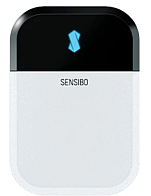





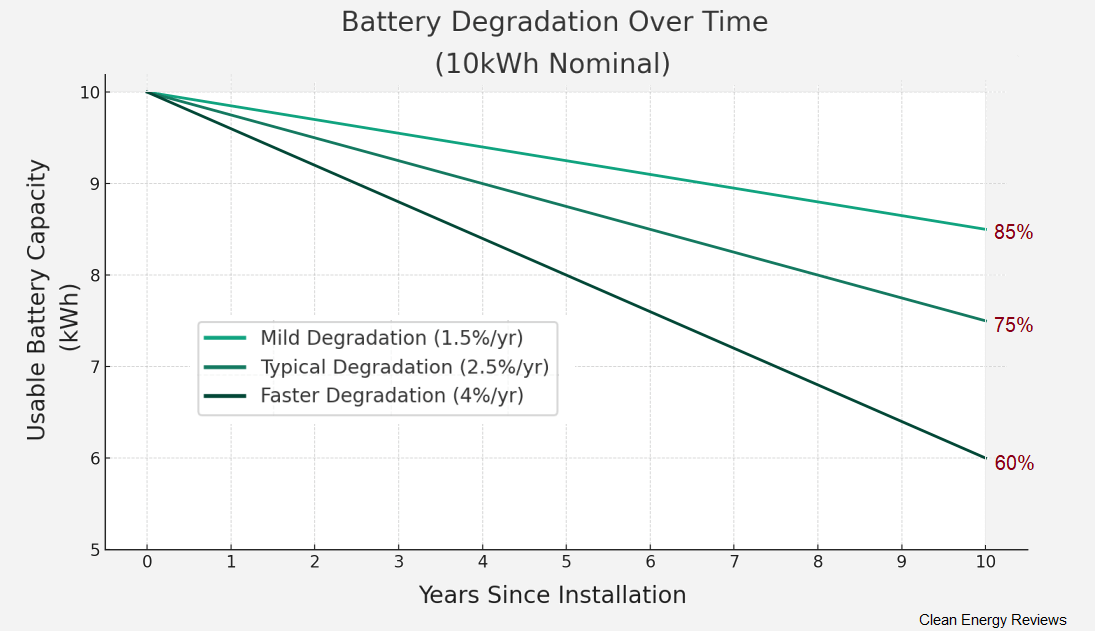

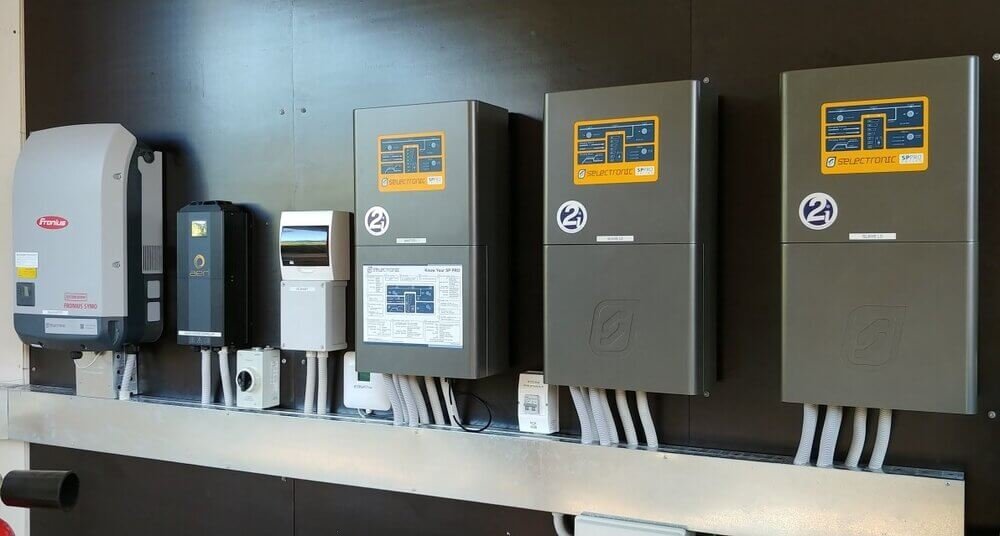
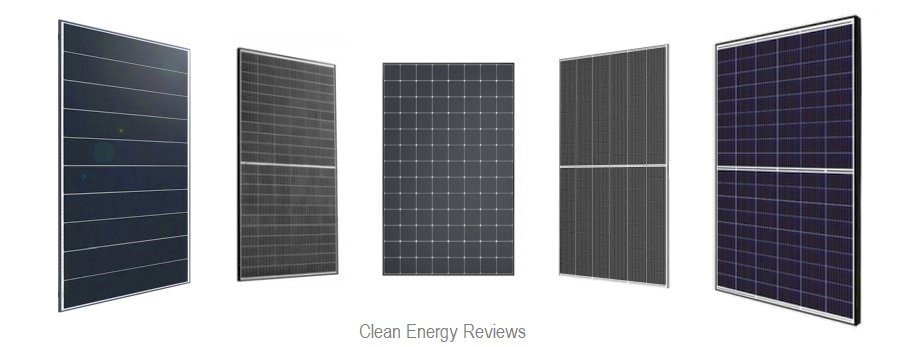

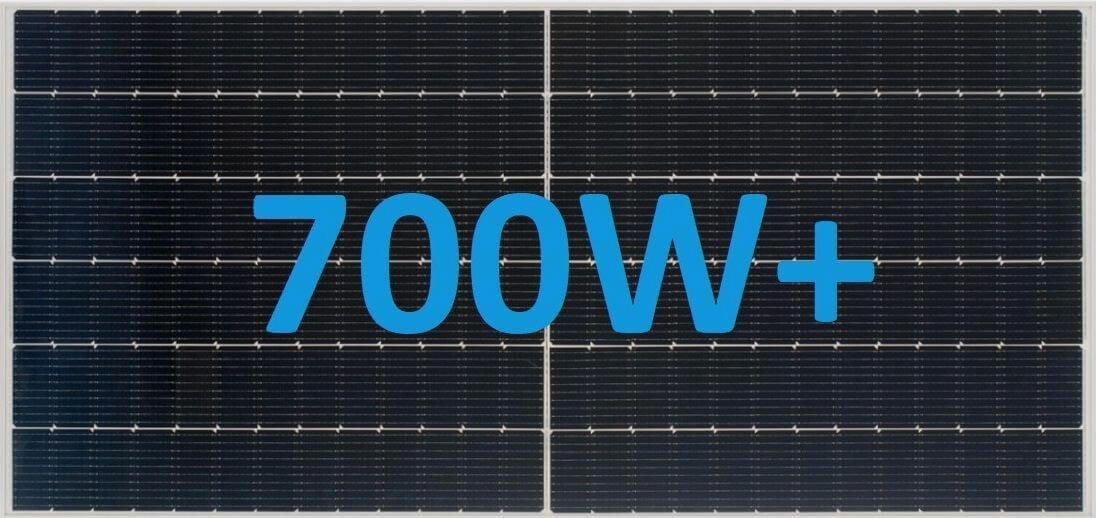


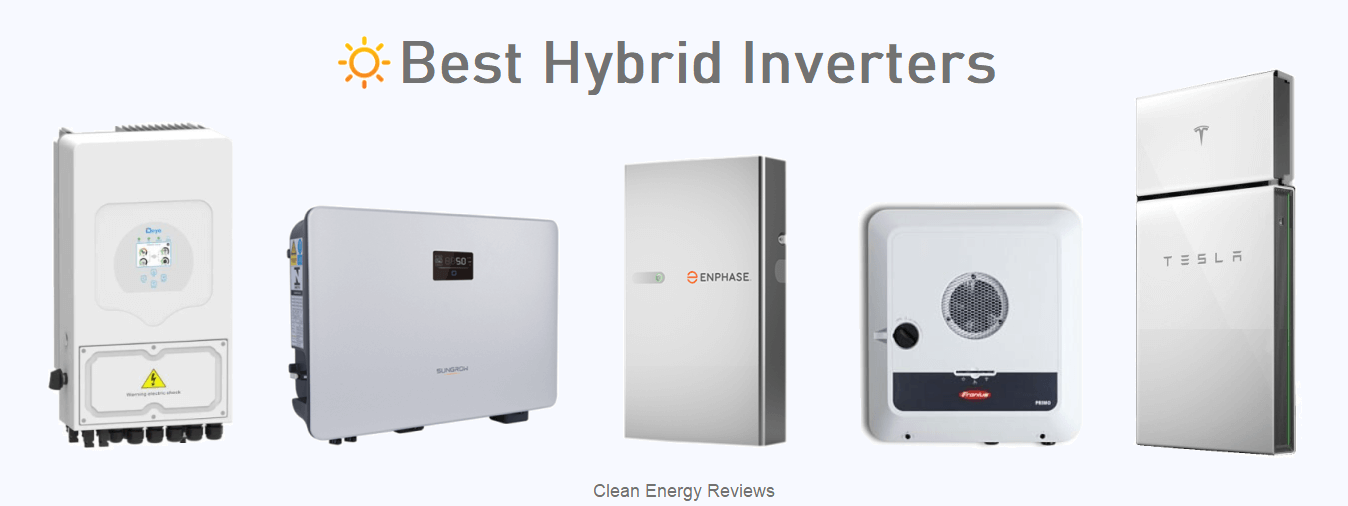
The comprehensive guide to solar battery and off-grid systems. How to select and size a home solar battery system and how much it may cost you. Also, alternatives to adding batteries and how energy efficiency can save you more than adding a battery.